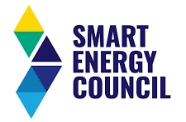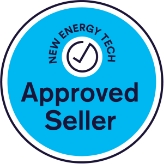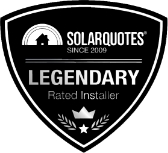
This blog will help you easily navigate your way through the nightmare that is choosing the best solar inverter for your home. We’ll start by comparing leading “shade solutions” and standard string inverters. Next, should you find out that your best option is to keep with a string inverter (as often is the case) then you can refer to the best solar inverter (string inverter) comparison chart in Part 2 (click here).
Disclaimer: I’ll be updating this blog for 2020. We’ve recently lost faith in Tigo, after experiencing numerous failures and issues with warranties.
Part 1
String inverters vs. Micros vs. Optimisers
There are two ways to do solar. The easy way and the hard way. The easy way is to install one string inverter on the ground. Simple, affordable, and fewer parts that can fail. The hard way is to install power electronics behind panels on the roof – and (usually) an inverter on the ground. Why would you choose the complex and expensive way? The table below shows why the hard way may-or-may-not be the best for your situation.
The one-word explanation in the table needs further clarification. So for each point in the table, I have elaborated comments below the table.
“No” doesn’t necessarily mean “No”. Read the comments below for a fuller answer.

I want quality and bang for buck
If you just want a quality affordable solar inverter and you don’t have a complicated roof, my best advice is to keep it simple and install a string inverter (eg Fronius, SMA, Sungrow). While rooftop power electronics allow for greater flexibility, it’s also more expensive and often the pros outweigh the cons.
Which is the best string inverter? I’ve given my take at the bottom of this blog.
 Serviceability outside of warranty is important to me
Serviceability outside of warranty is important to me
The problem with putting power electronics (optimisers or micro-inverters) on your roof is if they fail, someone has to get on your roof and lift a panel (sometimes several panels) to replace the failed product. If the brackets holding your panels down are 10 years old – it’s likely to turn into a nightmare. Panel clamps often seize and it’s difficult to find replacements. So if you’re looking for simplicity, forget optimisers and micros. Put a simple string inverter (like Fronius) near your switchboard. Easy peasy.
On the flip side, Enphase has a unique advantage over every other solution because it does not have a central point of failure (an inverter on the ground). If one Microinverter fails, the rest will keep working. If you have panel-level monitoring and notice one micro is down, then your production loss can be minimal.

I don’t want to be locked into one brand should something go wrong
The best solar inverters are interchangeable. Should Fronius, SMA, ABB or Sungrow go pear shaped in 5 years time, you can swap out your old inverter with the next best solar inverter. This is definitely not the case with Solaredge. SolarEdge inverters need SolarEdge optimisers. Even today’s models of SolarEdge optimisers are not fully interchangeable.
Should Enphase go bust or peeve you off, it would be possible to replace one Enphase Micro with another brand. You would, however, lose your monitoring capability of that panel.
Should Tigo go belly up, you could replace a Tigo optimiser with a Huawei optimiser. This solution is not currently warranted by Huawei, but it works. You would lose monitoring of that panel but still have the inverter monitoring.

My roof is tiny: 4 panels north, 3 east, 7 west
The above is obviously just an example, but chopped up complicated roofs often need optimisers or micro-inverter. Enphase, Tigo or Huawei are your options.
If you are looking for the best solar inverter for a complicated roof, I would steer away from SolarEdge due to blocking issues and a bunch of other reasons that I explain in this SolarEdge review.

I’ve got voltage rise issues
Voltage rise is sometimes a significant electricity grid issue that can make your solar system turn off in the middle of the day. It’s a fairly complex issue explained in detail in this post. If you have potential voltage rise issues, we’ll need to minimise voltage rise by minimising the length of the AC cable run and maximise the size of the AC cable.
If you choose a string inverter, this is simple. We install your inverter next to the switchboard and use 10mm cables. In this situation, we might only contribute 0.2% to voltage rise.
If, however, you choose a micro-inverter, we’ll need to run longer AC cables to your roof, and run small Enphase AC cables to every panel. On a high set complex roof, it may not be feasible to minimise the voltage rise on an Enphase system below 1%.
Not every Enphase system will have a voltage rise problem, but if you are looking for the best solar inverter solution, it is a problem worth considering.

I need panels north, east and west
Installing panels on three roof orientations is bread and butter for optimisers and micro-inverters. However many people in the industry don’t realise that you can also achieve the same outcome with the right string inverter. You need an inverter with around 18 amps DC input current like the “Fronius Primo SC” solar inverter. Read my post about the best way to install solar North East and West on a string inverter.
Again I mention “no ” for SolarEdge just to point out a potential blocking issue. Of course, if designed with long strings (longer than 10 panels) blocking may not occur. But this is often not possible.

I live in a unit and body corporate is a nightmare
Enphase is often the best solar inverter solution for body corporate situations.
- It’s cost-effective for smaller systems.
- It works well on any small multi-orientation roof.
- Because the inverters are on the roof, you only have a comparatively indiscrete box to install on a communal wall or in your unit.
- Because we run AC cable from the roof, the cable run can usually be more discrete and snuck inside wall cavities.
The other brand of Micro-inverter is AP Systems or APS micro-inverters. AP systems have had all kinds of issues in the past and I would recommend steering clear.
I live in a rainforest and still want solar
Enphase is hands down the best solar inverter solution if your shading is extreme. Every other solution requires 4 to 6 panels in the sun in order for the solar to produce anything. SolarEdge will likely suffer from blocking or may turn off. Enphase (micro-inverters) offers the only solution that will keep on running when all of the panels are shaded except one.
 I want to see how every panel is performing
I want to see how every panel is performing
While it’s possible to get panel-level monitoring when using optimisers, you can’t assume you are going to get it. This is because Solar Sales companies don’t want retired engineers calling them up asking why one panel is performing 5 watts less than the next. If you want that data, you may need to ask for it.
- Enphase recently released basic panel level data to customers for free! Nice one.
- SolarEdge gives the sales company the option to restrict your access when they set up your monitoring.
- Any string inverter coupled with Tigo optimisers will show panel monitoring if you pay for extra hardware and installation. But your monitoring will be across the 2 different monitoring platforms.
- SMA with Tigo have joined forces to give you panel-level monitoring on SMA’s monitoring site. You have to install a little bit more hardware but it’s more cost-effective and more integrated than Fronius and Tigo.
- Huawei gives you panel-level monitoring as standard.

I want rapid shutdown: Safety First
Rapid shutdown means if you turn off the main switch off at your house, there will be no electricity generated from your panels travelling through your roof. It’s a safety measure in case of a fire.
Enphase is always the safest system in theory because there is never DC power running from your panels to your inverter, and the AC power shuts off as soon as the power is off to your house.
Tigo (coupled with any string inverter mentioned below) requires the “Cloud Connect” to be installed to activate rapid shutdown. This is an additional cost.
Huawei will have rapid shutdown once they integrate Henry the Octopus (the safety box) into the inverter (coming in 2020).
SolarEdge has rapid shutdown by default, but it still has DC running through your roof during normal operation. And SolarEdge is not one of the best solar inverters for many other reasons.
 My roof has minor or medium shading
My roof has minor or medium shading
The problem with shading on just one panel is it can bring down the production of half of the panels on your roof. Shading, bypass diodes and solar panel power electronics is a complex discussion.
If you have minor or medium shade issues, I believe the best solar inverter and optimiser solution is a Fronius Inverter with Tigo optimisers on the shaded panels. If you want to monitor those panels, it will be more cost-effective to swap out the Fronius for SMA. If the shade issues are significant, we recommend Enphase. Huawei inverters with Huawei optimisers may also be an option for partial or full shade.
Part 2
Which is the Best Solar Inverter? (string)

It’s a straight-up question and for the last couple of years, I’ve had a straight-up answer. If you’ve chosen to go with a string inverter then the best solar inverter is hands down Fronius. The Austrian made inverter has been the market leader in Australia for flexibility of design, ease of use, in-depth online monitoring, durability, and after-sales support. Because of its popularity, Fronius occasionally has supply issues – especially for the solar installers who don’t pre-order their stock. You know a shonky solar sales company when they go around bagging out Fronius and trying to justify why their string inverter is better.
The Next-To-Best Solar Inverters
That’s not to say there is no place for other inverters: With Fronius, you pay a premium to get the best. And it’s not to say other inverters cannot be equal in some applications. It’s just Fronius seems to be great at everything, and they have a solution for almost everything residential. When we custom design a solar solution for your home, our go-to is always Fronius.
If you choose another inverter, SMA is a decent inverter and a great company. If you want to have Tigo optimisers on a few panels and want to monitor those panels, SMA is the best option. While SMA’s single-phase inverters are still being made in China, their manufacturing is bit-by-bit moving back to Germany. I reviewed SMA a few years ago, but admittedly it’s overdue a revisit.
Huawei’s solutions are very limited at the moment. However if their solution is right for you, then a Huawei inverter would be a safe gamble. I visited the Huawei factory in China recently. Huawei will have a wider and more flexible range of inverters on offer in 2020.
You could also choose ABB – A solid company and it seems the inverter has finally got consumption monitoring. The 5kW isn’t as flexible as the Fronius and they don’t offer the same range. But if it works for your roofline, the ABB is still a good inverter. The concern installers have with ABB is their warranty process. Quality installers want to make sure they can look after any of their customer’s warranty issues on their own – that’s just good customer service. But ABB chooses to deal directly with the end-user to sort out the warranty. In the past, warranties have taken several months to honour and warranties have been refused without good reason. The ABB Australia team have tried hard to get this warranty process to run fairly and efficiently and some reports say ABB has made huge improvements. Others installers seem so jaded with ABB that it seems nothing will win them back. Hopefully, ABB can keep things improving and regain industry trust.
 The best budget Solar Inverter
The best budget Solar Inverter
The best inverter on the budget range is easily Sungrow. The Chinese company, Sungrow is the second biggest inverter manufacturer in the world. While Sungrow had fairly significant failures five years ago, the service department in Australia was extremely pro-active. Sungrow has recently increased their range of inverters. They now include an 8kW single phase and three 5kW, 10kW and 15kW three-phase inverters. Their monitoring platform has significantly improved and they are soon to release a consumption monitoring option.
There are inverters on the market that are significantly cheaper than Sungrow. And it is possible that one of these inverters will do the job. But I haven’t found another budget inverter that I’d recommend. There are plenty that I’d recommend you avoid. The poor man will pay twice.
<21>Conclusion
When it comes to the best solar inverters on the market, there is no one size fits all. Micro-inverters have a place in the market for small, shaded and complicated roofs. SolarEdge is popular, but my experience has shown SolarEdge has far too many issues and limitations. Huawei is the new kid on the block and an inverter worth watching. If you don’t need the bells and whistles, Fronius is the best string inverter: uncomplicated, robust, and flexible. You can pair Tigo with Fronius if you have shade issues. Finally, if you want a really simple budget inverter, go with Sungrow – but don’t go any cheaper than that.

 Serviceability outside of warranty is important to me
Serviceability outside of warranty is important to me I want to see how every panel is performing
I want to see how every panel is performing My roof has minor or medium shading
My roof has minor or medium shading The best budget Solar Inverter
The best budget Solar Inverter







11 Responses
Hi Shahid, It is expected in Q2 2020 (before July).
Hi Mark, do you know when new Huawei models will be released as i need one with secure supply in a grid tie system. if they are tipping towards end of 2020 then i will go SMA route.
Hi James, Although the stc’s are calculated on the panels, the inverter needs to be new and on the approved list so you can claim stc’s. And no, Fronius and SMA, or any string inverter can be connected to an AC coupled battery just as easily.
Hi Paul, The Fronius fan runs only during the day, louder at lunch time. We havn’t had an issue after installing around 3000 over 5 years. The SMA single phase inverters are still Chinese made. When SMA moved to china for assembally, I pulled apart an new (but old version) german sma and a Chinese SMA (current one) and wrote a blog about it here.https://www.solarquotes.com.au/blog/chinese-vs-german-sma-sunny-boy/. It’s clearly a chinese built inverter.
Thanks Mark, i’m keen on more info of the European made inverters, why Fronius over SMA? I am concerned about the noise <65DB of Fronius vs <25DB SMA. My neighbours Fronius certainly is a bit noisy. I don't want Chinese inverter, for political reasons
Hi Mark I have the same questions as Rene plus a couple more. Keeping it simple with the desire to maybe add a battery in the future does this then lean the decision one way or the other between the Fronius and the SMA ? Also, are REC’s allocated by inverter, panels or only as a complete system. If I pick up an inverter on its own because it’s a good buy is that potentially going to end up not being a great saving ?
Hi Mark, love your blog and great posting. I’m researching inverters and have been comparing Fronius vs SMA. Purely on specs, SMA seems to win (higher output efficiency and absolute power). Are the durability and after sales that much better that you would gladly take the losses in efficiency during operation?
Hi Phil. I’m assuming you wouldn’t grid connect these panels. Don’t do it! They may not not be fire rated and are likely delisted for a reason. The cost of half-decent new panels will be covered by the rebate. You would be much better to sell those panels on Gumtree (for camping) and have a new set of panels installed. You’ll end up with a much safer install.
Hi I have 40 solar panels still in there box. I am chasing a 3 phase inverter plus the all the fruit plus, any ideas so I can get this off the ground. Note there is no rebate on my panels so the same would apply for the inverter unit. Any thoughts would be great Cheers Phil
Another great blog post, thanks Mark. I hope you realise how a great a resource your blog is for people in the solar industry that aren’t as connected on a day-to-day basis with household installations as you are! 🙂
Except fronius doesn’t have a proper backup solution. They say it can operate in backup mode for 15% of the time. Something to do with 53Hz that fronius inverter operates in backup mode. Btw why do you need postcode for comments. Are all your viewers in Australia.